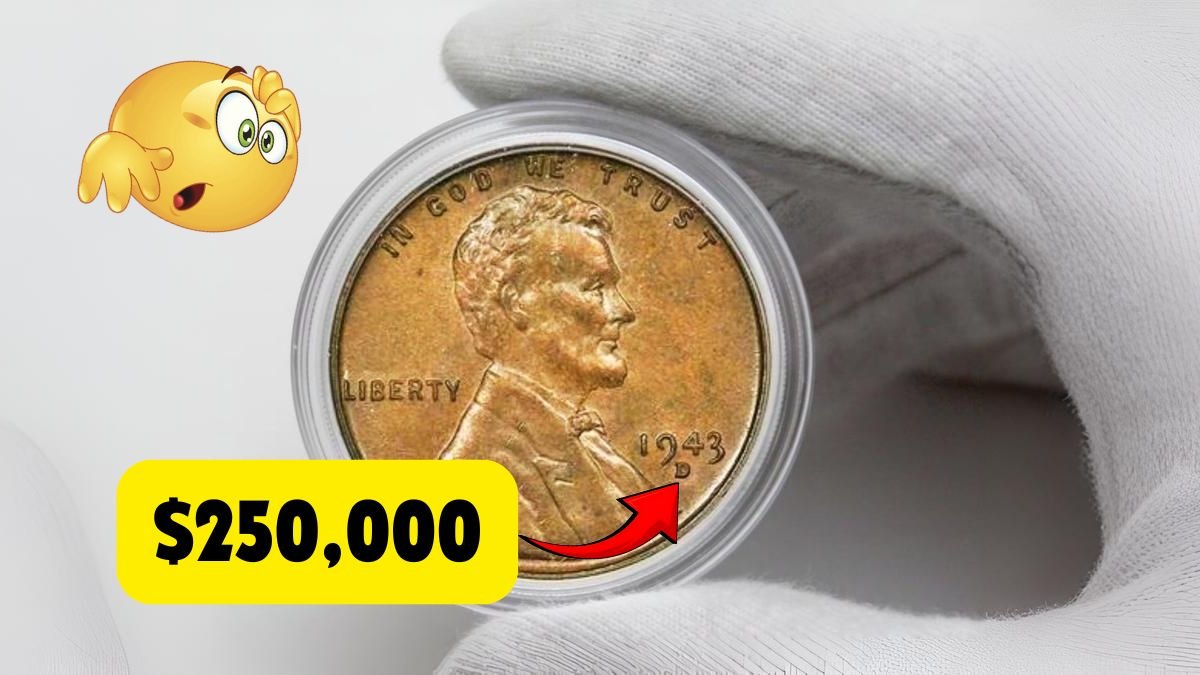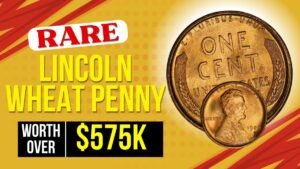Imagine if a small coin in your pocket—which you may have never even noticed—could give you the power to buy a new car! This is not a fictional story, but the reality of the Lincoln Wheat Penny. This is a coin of American history that looks ordinary, but due to the historical heritage hidden behind it and some rare editions, its value can go up to thousands to millions of dollars.
Minted between 1909 and 1958, these coins could be seen in every home, shop and pocket in America. But even today there are many people who consider these coins as just a simple “one cent” and put them in a tip jar or donation box. They do not even realize that they have let luck go away.
Wheat Penny: A glorious beginning in the depths of history
The Lincoln Wheat Penny was first issued by the US Mint in 1909 to commemorate the 100th birth anniversary of Abraham Lincoln. This was the first time an image of a real historical figure appeared on a U.S. coin. Prior to this, coins usually featured symbolic figures like Lady Liberty.
The coin was designed by Victor D. Brenner, who depicted Lincoln’s face on the coin’s front side and two ears of wheat on the reverse. These ears of wheat are what give the coin its name—the “Wheat Penny.” The design was not only meant to honor Lincoln but also to symbolize America’s economic prosperity.
When the design was replaced by the Lincoln Memorial in 1959, all previous Wheat Pennies became collectors’ favorites. Imagine, every coin that’s sitting in your house today is at least 66 years old—and still brims with history.
Rarity and Value: Which Coins Are the Most Valuable?
Thousands and millions of Wheat pennies were minted, but coins with certain years and designs are so rare that their value has made history. Below are three of the most talked about versions:
| Year & Variety | Why It’s Rare | Estimated Auction Value |
|---|---|---|
| 1909-S VDB | Only 484,000 coins were minted with the designer’s initials. | $1,000 – $10,000 (₹80,000 – ₹8 lakh) |
| 1943 Copper | Accidentally struck on copper instead of wartime steel planchets. | $85,000 – $250,000 (₹70 lakh – ₹2 crore) |
| 1955 Double Die | Visible doubling of the date and the phrase “IN GOD WE TRUST.” | $5,000 – $45,000 (₹4 lakh – ₹36 lakh) |
With these figures, anyone can understand that even a simple-looking coin can be worth millions. And the best part—it is possible that such a coin is still hidden in someone’s pocket, drawer or old box.
Can you also have such a rare coin? Easy ways to identify it
If you are wondering whether you can find such a coin or not, then you will be happy to know that every few years some common man finds such rare coins. The only difference is that they have paid attention to their coins. Here are some tips that can make your search easier:
- Buy rolls of coins from the bank and check them carefully: Often old, rare coins are found in bank-wrapped coins.
- Search old safes, piggy banks, and coffee cans, especially when cleaning out a relative’s house or having a garage sale.
- Run a magnet over a 1943 coin: Regular steel coins stick to magnets, but rare copper ones don’t.
- Look at a 1955 coin with a 10x loupe (magnifying glass): If you see a doubling of “1955” or “IN GOD WE TRUST,” it could be worth millions.
- Look for the “S” and “VDB” markings on the bottom of a 1909 coin: This is probably the easiest way to tell if the coin is rare.
Is there really a coin like this still in circulation?
You might be wondering where such rare coins survive. But the truth is that people find them every year, and it’s often when they come across coins by chance—sometimes in vending machines, sometimes in change, or while cleaning out old boxes.
That’s what’s so great about the Wheat Penny—it’s a tiny treasure that only those who look carefully will find.
The Wheat Penny is not just a coin; it’s also a teaching tool.
The coin’s value isn’t just economic; it’s also an educational tool. It’s a great way to teach children about America’s history, wartime economy, printing mistakes, and cultural changes.
Many teachers in the US use these coins to teach students history. Holding a 1910 coin in your hand and realizing it went through the Great Depression or World War II—it sparks curiosity in children and connects them to history.
Conclusion: Take a closer look at your coins today.
The Lincoln Wheat Penny isn’t a magical coin, but it’s a window that connects us to the stories of the past and the opportunities of today. The coin’s value can’t be measured in just dollars or dollars—it’s a symbol of cultural heritage, historical understanding, and personal discovery.
So the next time you take change from a shop or find some coins jingling in your pocket, just take a close look. Who knows, the door to your luck might just open through an old copper coin.
FAQs
Q. What is a Lincoln Wheat Penny?
A. The Lincoln Wheat Penny is a U.S. one-cent coin minted from 1909 to 1958, featuring wheat stalks on the reverse side.
Q. Why are some Wheat Pennies valuable?
A. Certain rare varieties like the 1909-S VDB, 1943 Copper, and 1955 Double Die are worth thousands due to low mintage or minting errors.
Q. How can I tell if I have a rare Wheat Penny?
A. Look for unique features like a small “S” mintmark (1909-S), copper composition in 1943 coins, or doubled letters/numbers in 1955.
Q. Are Wheat Pennies still in circulation?
A. Yes, though rare, some Wheat Pennies still show up in loose change or coin jars today.
Q. Where can I sell a valuable Wheat Penny?
A. You can sell it through coin dealers, auction houses, or online marketplaces—preferably after getting it professionally appraised.


